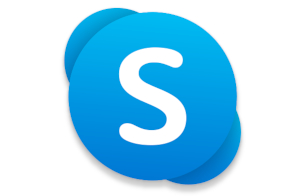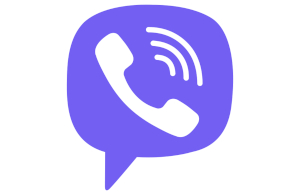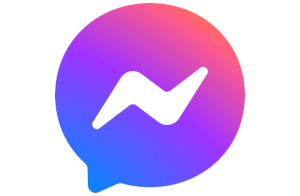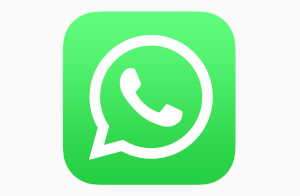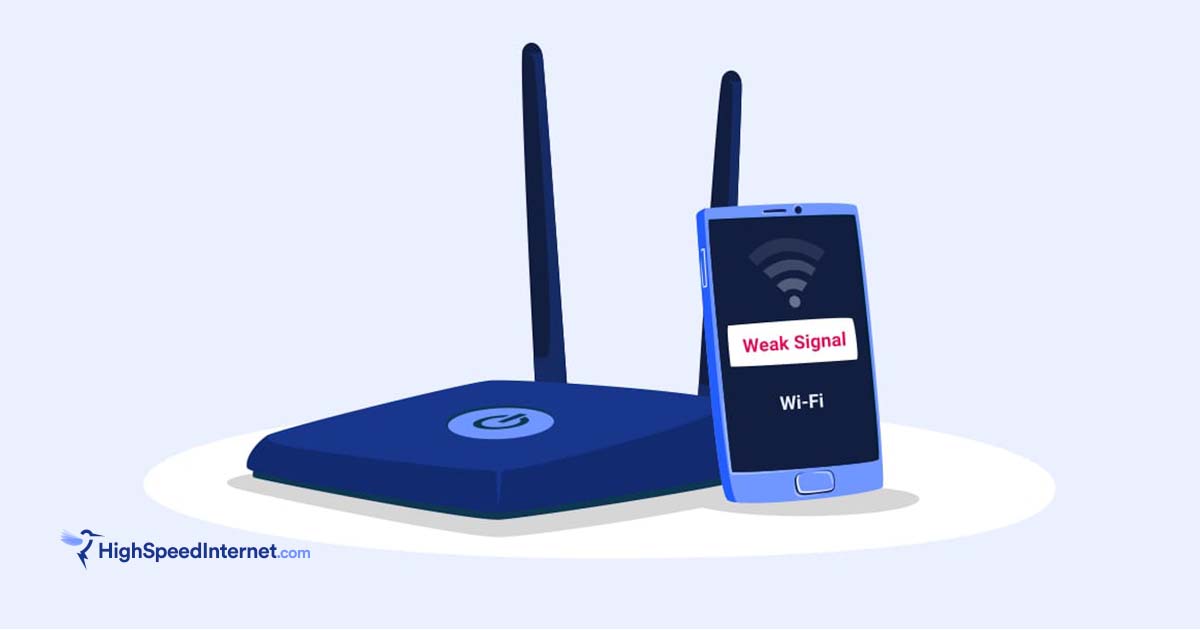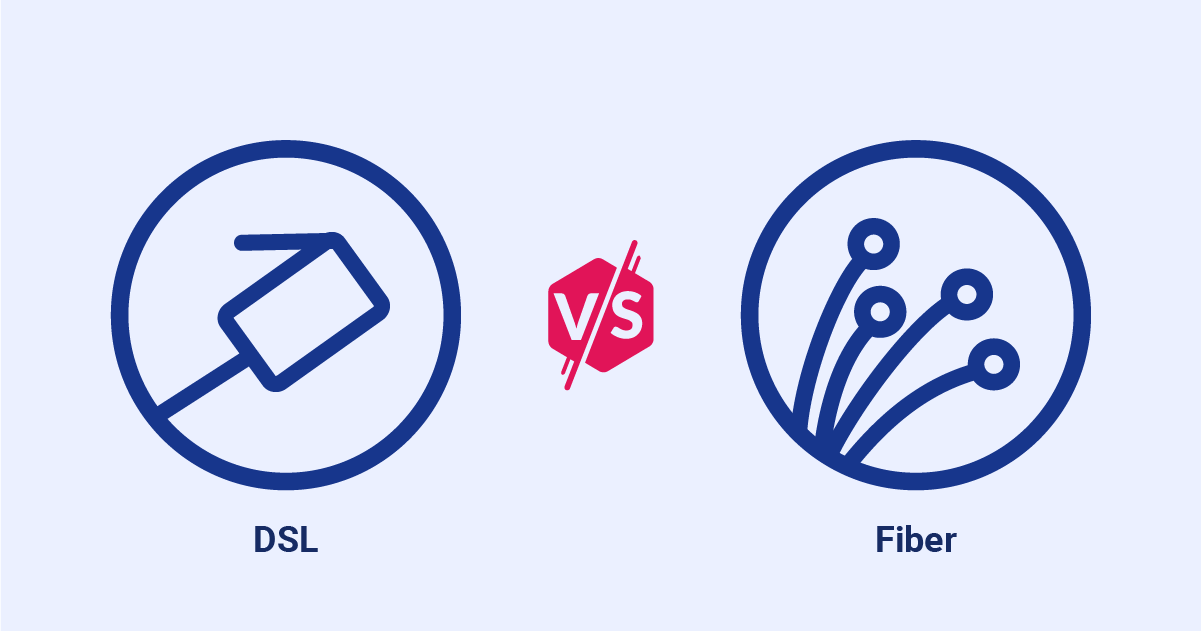The 6 Best Apps for Making Internet Calls 2024
Here are the best apps to call landlines, mobile phones, or social platforms using the internet.
Apr 18, 2024 | Share
FAQ, How-To
The type of service or app you need to make calls on the internet squarely depends on what you’re calling. Google Voice is your best option for calling a landline or mobile phone. Wi-Fi Calling is a good alternative if your carrier and device support it (and most now do). Messenger is best if you never intend to call traditional landlines or mobile phone numbers from the internet.
We’ll list the best apps and services for making internet calls to traditional phone numbers and other online platforms.
Do you have the best connection for internet calls?
Consult our guide on how much speed you need for Zoom to give you an idea of what’s best for internet calling, and then run our speed test. If you need an upgrade to a better plan, enter your zip code below to see what is available to you.
The 6 best apps for making internet calls
- Best for landline calls: Google Voice
- Best for availability: Skype
- Best for personalization: Viber
- Best social media option: Messenger
- Best for iPhone to Android calls: Google Duo
- Best for security: WhatsApp
Compare phone calling app prices and features
| Service | Best features | Price | Order online | |
|---|---|---|---|---|
| Best for landline calls | Google Voice | Free–$9.50/min. | Get Google Voice | |
| Best for availability | Skype | Starting at $2.54/mo. | Get Skype | |
| Best for personalization | Viber | $0.01–$2.99/min. | Get Viber |
*Price at time of writing. Prices are subject to change.
Compare app-to-app calling features
| Service | Best features | Price | Order online | |
|---|---|---|---|---|
| Best social media option | Messenger | Free | Get Messenger | |
| Best for iPhone to Android calls | Google Duo | Free | Get Google Duo | |
| Best for security | Free | Get WhatsApp |
*Price at time of writing. Prices are subject to change.
What you should look for in an internet calling app
You need a Voice over Internet Protocol (VoIP) service to call landlines and mobile phone numbers from the internet. Keep an eye on pricing, as these services typically charge a rate for each minute used—depending on where you are calling—or they may offer a monthly subscription. Most don’t charge you for calling others when using the same service, like a Skype-to-Skype call.
Also, pay close attention to the security features. You want a service with two-factor authentication so hackers can’t access your account and accumulate charges you can’t pay. Encryption is essential, too, as you don’t want eavesdroppers listening in on your conversations as they zip across the internet.
Best apps to call phone numbers
Use the VoIP services listed below to call landlines and mobile numbers from the internet. They start out free, but you may need a subscription for some features or credits to pay calling charges. Both Skype and Viber layer on instant messaging, video calling, and more.
Best for landline calls—Google Voice
Pricing
- Up to $9.50/min.
Features
- Provides free calls within the US
- Supports incoming calls from anywhere
- Includes a free phone number
- Stores downloadable voice messages
- Transcribes voicemail
- Blocks spam calls
- Supports Google Home
Availability
- Desktop: Web
- Mobile: Android, iPhone, iPad
For simple internet calling to landlines and mobile numbers, you can’t beat Google Voice. It provides free calling within the United States and a free phone number.
If you need to make international calls, you can add up to $70 in credit using a bank account or credit card stored in your Google Account. Google’s international calling rates start at $0.01 per minute and depend on your call’s destination.
You can access Google Voice by signing in to voice.google.com in a web browser or mobile app (Android, iPhone/iPad). The service also includes text messaging, voicemail, and free voicemail archiving.
If, for some reason, you stop using Google Voice for a spell (maybe a year), Google removes the free phone number from your account. You have 45 days to reclaim the number after that. If you miss the deadline, Google assigns the number to a different account. You must then go into the Google Voice settings and select Get a Number.
![]() Pros:
Pros:
- Free nationwide calling
- Free phone number
![]() Cons:
Cons:
- No emergency calling
- No direct customer support
Best for availability—Skype
Pricing
- Starts at $2.54 per month for a subscription
- Starts at $5.00 for Skype Credit
- Costs $6.99 per month to receive landline and mobile calls
- Toll charges vary
Features
- Includes a monthly credit via a Microsoft 365 subscription
- Provides free audio and HD video calling between users
- Sends SMS and instant messages
- Offers desktop software and apps
- Receives calls from landlines and cellphones (with a separate subscription)
- Works with Amazon Alexa and newer Xbox consoles
Availability
- Desktop: Windows, Mac, Linux, Web
- Mobile: Android, iPhone, iPad
- Other: Xbox, Amazon Alexa
Skype is the tool if you need a universal solution. While it’s native on Windows-based devices, you can also use it in a web browser, on a Mac, Linux—even the Xbox One gaming consoles and newer.
Skype-to-Skype calls are free, but unlike Google Voice, you must pay to call national landlines and mobile numbers. Calls require Skype Credit to pay for minutes, or you can use a subscription starting at $2.99 per month.
You need a Skype number to receive calls from landlines and mobile numbers. Microsoft bills you monthly ($6.50), quarterly ($18.53), or annually ($52.26) for a number in the U.S.
Got a Microsoft 365 subscription?
The Microsoft 365 Family and Personal plans include 60 minutes per month of free Skype calls.
Skype also includes instant messaging, video calling, screen sharing, and more. It’s a native pre-installed app on Windows 10 PCs, but you can download the desktop client that feels less integrated into the operating system. The desktop client is also available for macOS and in three flavors for Linux.
![]() Pros:
Pros:
- Native to Windows
- Widely available
![]() Cons:
Cons:
- Requires a second subscription to receive landline calls
- Offers no free nationwide calling
Best for personalization—Viber
Pricing
- $0.01–$2.99/min.
- $5.99/mo. For unlimited worldwide calls
Features
- Includes autodestruct timer that deletes messages
- Provides free calls between users
- Includes tool for creating stickers and GIFs
- Sends messages, videos, and files
- Supports group chat and calls
- Supports user-built communities
Availability
- Desktop: Windows, Mac, Linux
- Mobile: Android, iPhone, iPad
Like Skype, there’s more to Viber than making calls to landlines and cellphones. You can make video calls to other Viber users, start group chats, send instant messages, create stickers and GIFs, and set a self-destruct timer to delete your messages after a specific time. It also provides a community component for building and managing unique places to chat.
And like Skype, the calling aspect—Viber Out—isn’t completely free. You can purchase credit to pay for minutes used or subscribe to a monthly plan. For instance, you can call any landline and mobile number within the United States for $1.99 per month, making it more expensive than Google Voice.
Unfortunately, Viber does not have a web client for browsers. You must install a mobile app or desktop software to use this service.
![]() Pros:
Pros:
- Supports stickers and GIFs
- Deletes messages automatically after a specific time
![]() Cons:
Cons:
- No web client
- No free nationwide calling
Sign up for our newsletter. Get more from your internet.
Have a better, faster, more secure experience with your internet.
By signing up, you agree to our Privacy Policy & Terms and Conditions.
Best apps for app-based calls
Use these apps if you never plan to call landlines and mobile numbers from the internet. All three services support app-to-app voice and video calling only, so the caller and receiver must use the same platform. For instance, both individuals need a Facebook account to use Messenger.
Best social media option—Messenger
Pricing
- Free
Features
- Supports voice and video
- Provides a web client for browsers
- Includes AR effects
- Offers different chat themes to personalize conversations
- Supports fingerprint scanning and face recognition
- Sends recorded voice or video messages
- Supports Facebook Pay
Availability
- Desktop: Windows, Mac, Web
- Mobile: Android, iPhone, iPad
Messenger needs no introduction. Just over three billion people actively used Facebook by the fourth quarter of 2023, most of whom are likely already familiar with Messenger’s video and voice calling features. That places this service at the top of our app-to-app list due to its widespread use and familiarity.
If you have kids younger than 13, you can install Messenger Kids to send them messages or chat through video. Parents can manage their kids’ contact lists, monitor their activity, and add their friends. Kids can block contacts as needed, too.
If you use Windows and Mac, Facebook provides a Messenger app on the Microsoft Store and the Mac App Store, or you can use the web version in your favorite browser.
![]() Pros:
Pros:
- No cost
- Voice and video calls
![]() Cons:
Cons:
- Can’t call landlines
- Can’t call contacts outside Facebook
Best for iPhone to Android calls—Google Duo
Pricing
- Free
Features
- Enables video calls between Android and iPhones
- Uses end-to-end encryption
- Shares your phone’s screen
- Supports up to 32 participants in a group call
- Sends video calls to Android devices that don’t have Google Duo installed
- Requires a Google Account to use across multiple platforms and devices
Availability
- Desktop: Web
- Mobile: Android, iPhone, iPad
Google Duo is Google’s response to Apple’s FaceTime. The difference here is you can get Google Duo on an iPhone, but you can’t get FaceTime on an Android phone. That gives Google the upper hand in the multidevice battle for your calling needs.
Google Duo supports both audio and video calls on the internet. It also features a Family Mode that lets you doodle on the screen during video calls. The service is free to use and requires a phone number, but you need a Google Account to use this service on multiple devices and platforms.
Finally, Google Duo provides end-to-end encryption for all voice and video calls. Encryption prevents hackers from listening and watching your conversation as you communicate across the internet.
![]() Pros:
Pros:
- Make video calls between Android phones and iPhones/iPads
- Call kids using Family Mode
![]() Cons:
Cons:
- No instant messaging
- Limited group calling
Best for security—WhatsApp
Pricing
- Free
Features
- Relies on your existing phone number
- Provides end-to-end encryption
- Broadcasts a single message to multiple users
- Shares messages, photos, and videos with up to 256 users simultaneously
- Records voice messages
- Shares documents
- Deletes messages after seven days
Availability
- Desktop: Windows, Mac, Web
- Mobile: Android, iPhone
WhatsApp uses your phone number to eliminate the typical security risks associated with username and password combinations. There are ways to use WhatsApp without a SIM card, but one must be in place to receive a verification code when creating an account. You don’t need a Facebook account to use this service, even though Meta owns WhatsApp.
WhatsApp’s end-to-end encryption is enabled by default, meaning all calls and messages are protected from hacker eavesdropping while they are in transit. You can manually enable two-step verification for added security that uses a six-digit pin, so even if someone obtains your phone number and password combo, new devices require a PIN code to access the account.
Other notable features include group chat, document sharing, and a built-in camera—it doesn’t use your phone’s default camera app.
![]() Pros:
Pros:
- No login credentials required
- End-to-end encryption
![]() Cons:
Cons:
- Requires a phone number
- Requires QR code scan for web version use
Do you have enough speed for internet calling?
You don’t need a lot of speed to make a VoIP call—0.5 Mbps at the most.3 Still, find out if you have what you need by downloading our speed test app.
Do you have enough speed for internet calling?
You don’t need a lot of speed to make a VoIP call—0.5 Mbps at the most. Still, find out if you have what you need by running our speed test.
Alternative: Use your carrier’s Wi-Fi calling
Wi-Fi calling is typically built into smartphones and uses your existing mobile number. Many carriers like AT&T and Verizon support and encourage the use of Wi-Fi calling whenever you’re near an access point.
So, how does Wi-Fi calling work?
When you place a call, the Wi-Fi calling component converts your analog cellular calls into data. That data is then sent over a local Wi-Fi connection instead of your carrier’s cellular network. When you leave the local Wi-Fi network, Wi-Fi calling switches back to your carrier’s cellular network until you connect to Wi-Fi again.
You can enable Wi-Fi calling by tapping through these settings:
- iPhone: Settings > Cellular > Wi-Fi Calling
- Android (stock): Phone app > More (three dots) > Settings > CAlls > Wi-Fi Calling
- Android (Samsung): Phone app > More (three dots) > Settings > Wi-Fi Calling
According to Apple, approximately 24 carriers support Wi-Fi calling in the United States. Here are a few examples:
- AT&T
- Consumer Cellular
- Cricket
- Google Fi
- Metro by T-Mobile
- Mint Mobile
- Spectrum
- Sprint, now a part of T-Mobile
- T-Mobile USA
- TracFone/Straight Talk
- US Cellular
- Verizon Wireless
- Xfinity Mobile
Our verdict
Use Google Voice if you want to call a landline or mobile number, especially if you’re calling from a computer. It provides free nationwide calling while the international rates cost up to $9.50 per minute. The best alternative is to use Wi-Fi calling if your carrier offers it, which is built into Android and iOS and doesn’t require a third-party app.
If you’re not calling a landline or mobile number, chances are you already have Facebook’s Messenger app. WhatsApp is a secure alternative, as you don’t need a Facebook or Google account to use it. Google Duo is a good FaceTime alternative for video calling between Android and iPhone owners.
FAQ about internet phone calls
What is VoIP?
Voice over Internet Protocol (Voice over IP or VoIP) is a technology that converts analog signals into data and sends that data over the internet. VoIP data does not cross over transitional telephone networks. A call typically consists of two internet-connected devices that support VoIP technology.
What is VoWiFi?
Voice over Wi-Fi (VoWiFi) is a technology that uses VoIP to convert analog voice calls into data and sends that data over Wi-Fi. VoWiFi relies on your mobile number to make calls to landlines and mobile phones.
The big difference with this method over traditional VoIP calls is that your voice data passes through the carrier’s packet-switched network (PSN) to guarantee call quality. If your Wi-Fi connection drops, the data switches over to your carrier’s data connection.
These calls don’t count against your plan’s data allowance.
How does internet calling work?
First, your analog call is converted to digital signals using VoIP. The data is then sent across the internet, but what happens next depends on the receiver.
If you’re calling a landline or a mobile number, your VoIP data includes your public IP address that is translated into a phone number when it reaches the service’s server. Your data is converted into an analog signal and sent along the traditional telephone networks. Calling rates apply because your call passes through circuits that must be kept open during the connection.
If you place a VoIP call to someone on the same service or a different VoIP service, the recipient’s app or device receives the data and converts it into an analog signal. The call doesn’t pass through traditional phone networks but instead uses typical internet infrastructure.
Author - Kevin Parrish
Kevin Parrish has more than a decade of experience working as a writer, editor, and product tester. He began writing about computer hardware and soon branched out to other devices and services such as networking equipment, phones and tablets, game consoles, and other internet-connected devices. His work has appeared in Tom’s Hardware, Tom's Guide, Maximum PC, Digital Trends, Android Authority, How-To Geek, Lifewire, and others. At HighSpeedInternet.com, he focuses on network equipment testing and review.
Editor - Cara Haynes
Cara Haynes has been editing and writing in the digital space for seven years, and she's edited all things internet for HighSpeedInternet.com for five years. She graduated with a BA in English and a minor in editing from Brigham Young University. When she's not editing, she makes tech accessible through her freelance writing for brands like Pluralsight. She believes no one should feel lost in internet land and that a good internet connection significantly extends your life span.

